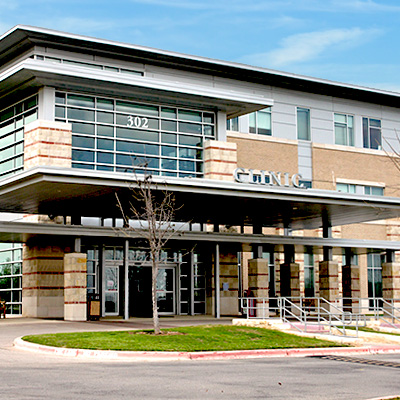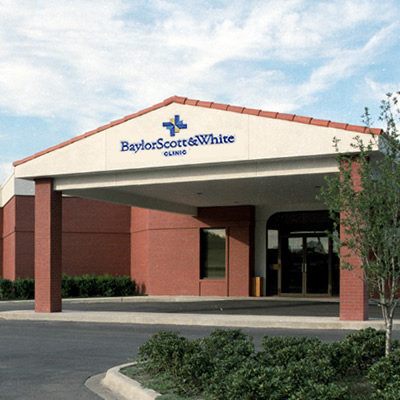What is a uterine polyp?
A uterine polyp, also called an endometrial polyp, is a small growth that appears on the endometrium, the lining of the uterus. While you can develop polyps at any age, they’re most common in women ages 40 to 49.
Uterine polyps can vary in size, and you can develop one or multiple polyps. In most cases, uterine polyps are benign (noncancerous), but some can turn into cancer, so it’s always a good idea to discuss treatment options with your provider.
Uterine polyps symptoms
Uterine polyps don’t always cause symptoms. When they do, the most common one is abnormal menstrual bleeding. About 25% of reproductive-age women with abnormal bleeding have uterine polyps.
Abnormal bleeding may look like:
- Heavy bleeding during your period (menorrhagia)
- Irregular periods
- Spotting (bleeding between your periods)
Other signs of uterine polyps include:
- Abdominal or pelvic pain
- Bleeding after menopause
- Infertility
When to see a doctor
Talk with your women’s health specialist if you’re experiencing abnormal bleeding, pain or trouble getting pregnant. Your provider can determine if polyps are the cause or if you have another condition that needs to be treated.
Your provider can also perform tests on a polyp to see if it is cancerous, and if so, you can begin treatment as early as possible, which can lead to better outcomes.
What causes uterine polyps?
The exact cause of uterine polyps is not known. However, they appear to grow in women with high estrogen levels, either related to a health condition or medications.
Uterine polyps risk factors
Your age is the biggest risk factor when it comes to uterine polyps. These growths are most common between ages 40 and 49, around the time when you’re approaching menopause (known as perimenopause). Cancerous polyps are more common after age 60 and in women who have gone through menopause.
Additional risk factors for polyps include:
- Being overweight (BMI 25 to 29.9) or obese (BMI 30 or higher)
- Having high blood pressure (hypertension)
- Taking tamoxifen, a breast cancer treatment drug
- Receiving high-dose estrogen hormone replacement therapy
- Having Lynch syndrome or Cowden syndrome
How are uterine polyps diagnosed?
Your women’s health specialist may combine imaging tests with a tissue sample to confirm whether you have uterine polyps or rule out other conditions.
Medical history and physical exam
Your healthcare provider will review your medical history and ask about your symptoms. If you’re postmenopausal, they may inquire about any bleeding or spotting you've experienced. They’ll also ask about any medications you're taking. If you still have periods, they’ll likely ask about the specifics of your menstrual cycle, including duration and frequency. Additionally, they may ask if you’ve had trouble getting pregnant.
Your provider will perform a gynecological exam, including a pelvic exam and Pap smear. They may order additional tests or procedures to confirm the presence of polyps.
Transvaginal ultrasound
A transvaginal ultrasound uses sound waves to create images. Your provider will use a wand to look at the uterine lining for signs of thickening, which can indicate polyps.
Hysterosonogram
A hysterosonogram, also called sonohysterography, is an ultrasound used to help your provider diagnose abnormal bleeding. First, saline is injected into the uterus to help make polyps easier to see, and then your provider will use a wand to capture images of your uterine wall and endometrium.
Hysteroscopy
During a hysteroscopy, your provider uses a hysteroscope, a long, thin tube with a lighted telescope, to examine the inside of your uterus. A hysteroscope is inserted through your vagina and cervix. Sometimes, hysteroscopy is combined with surgery to remove uterine polyps.
Endometrial biopsy
A tissue sample of your endometrial tissue, known as a biopsy, will help your provider determine if your abnormal bleeding is caused by something other than polyps, such as endometrial cancer.
Uterine polyp treatment
Based on the evaluation, your women’s health specialist will create a personalized treatment plan tailored to your unique needs. Treatment options may include:
-
Watchful waiting
If you’re not experiencing symptoms, you may not need treatment. Sometimes, polyps disappear on their own, and small polyps usually don't require treatment unless there's a risk of uterine cancer.
-
Medication
Your provider may recommend medications to regulate your hormone levels. These medications can treat symptoms but are often not a good long-term solution.
-
Surgery
Uterine polyps may also be removed in a surgical procedure:
- Uterine polypectomy: Your provider will likely be able to remove your polyp during hysteroscopy. During the procedure, your physician inserts a lighted camera (scope) into your uterus. The doctor removes polyps with special tools while viewing the images on a computer.
- Hysterectomy: If a polyp is cancerous, further surgery may be necessary. During a hysterectomy, a surgeon removes your uterus. Used infrequently for polyps, a hysterectomy may be an option if your polyp contains cancer cells.
Find specialized care for uterine polyps
We help you find relief and treatment for uterine polyps at a location that fits your needs. We offer several locations for your care, including specialized women’s health centers in North and Central Texas.

Andrews Women's Hospital at Baylor Scott & White - Fort Worth
1400 8th Ave , Fort Worth, TX, 76104
Baylor Scott & White All Saints Medical Center - Fort Worth
1400 8th Ave , Fort Worth, TX, 76104
Baylor Scott & White Clinic - Austin North Burnet
2608 Brockton Dr , Austin, TX, 78758- Monday: 8:00 am - 5:00 pm
- Tuesday: 8:00 am - 5:00 pm
- Wednesday: 8:00 am - 5:00 pm
- Thursday: 8:00 am - 5:00 pm
- Friday: 8:00 am - 5:00 pm

Baylor Scott & White Clinic - Brenham Hwy 290
604 US 290 , Brenham, TX, 77833- Monday: 7:00 am - 7:00 pm
- Tuesday: 7:00 am - 5:00 pm
- Wednesday: 7:00 am - 5:00 pm
- Thursday: 7:00 am - 7:00 pm
- Friday: 7:00 am - 5:00 pm
- Saturday: 8:00 am - 12:00 pm

Baylor Scott & White Clinic - Cedar Park
910 E Whitestone Blvd , Cedar Park, TX, 78613- Monday: 8:00 am - 5:00 pm
- Tuesday: 8:00 am - 5:00 pm
- Wednesday: 8:00 am - 5:00 pm
- Thursday: 8:00 am - 5:00 pm
- Friday: 8:00 am - 5:00 pm
- Monday: 7:00 am - 4:30 pm
- Tuesday: 7:00 am - 4:30 pm
- Wednesday: 7:00 am - 4:30 pm
- Thursday: 7:00 am - 4:30 pm
- Friday: 7:00 am - 4:30 pm
- Saturday: 9:00 am - 4:30 pm
- Sunday: 9:00 am - 4:30 pm

Baylor Scott & White Clinic - College Station Rock Prairie
800 Scott and White Dr , College Station, TX, 77845- Monday: 7:30 am - 5:00 pm
- Tuesday: 7:30 am - 5:00 pm
- Wednesday: 7:30 am - 5:00 pm
- Thursday: 7:30 am - 5:00 pm
- Friday: 7:30 am - 5:00 pm

Baylor Scott & White Clinic - Pflugerville Medical Center
2600 E Pflugerville Pkwy Ste 200, Pflugerville, TX, 78660- Monday: 8:00 am - 5:00 pm
- Tuesday: 8:00 am - 5:00 pm
- Wednesday: 8:00 am - 5:00 pm
- Thursday: 8:00 am - 5:00 pm
- Friday: 8:00 am - 5:00 pm
- Monday: 7:30 am - 4:00 pm
- Tuesday: 7:30 am - 4:00 pm
- Wednesday: 7:30 am - 4:00 pm
- Thursday: 7:30 am - 4:00 pm
- Friday: 7:30 am - 4:00 pm

Baylor Scott & White Clinic - Round Rock 302 University
302 University Blvd , Round Rock, TX, 78665- Monday: 8:00 am - 5:00 pm
- Tuesday: 8:00 am - 5:00 pm
- Wednesday: 8:00 am - 5:00 pm
- Thursday: 8:00 am - 5:00 pm
- Friday: 8:00 am - 5:00 pm

Baylor Scott & White Clinic - Santa Fe
1402 W Ave H , Temple, TX, 76504- Monday: 8:00 am - 5:00 pm
- Tuesday: 8:00 am - 5:00 pm
- Wednesday: 8:00 am - 5:00 pm
- Thursday: 8:00 am - 5:00 pm
- Friday: 8:00 am - 5:00 pm
- Monday: 7:00 am - 4:30 pm
- Tuesday: 7:00 am - 4:30 pm
- Wednesday: 7:00 am - 4:30 pm
- Thursday: 7:00 am - 4:30 pm
- Friday: 7:00 am - 4:30 pm

Baylor Scott & White Clinic - Temple
2401 S 31st St , Temple, TX, 76508- Monday: 8:00 am - 5:00 pm
- Tuesday: 8:00 am - 5:00 pm
- Wednesday: 8:00 am - 5:00 pm
- Thursday: 8:00 am - 5:00 pm
- Friday: 8:00 am - 5:00 pm

Baylor Scott & White Clinic - Temple Professional Plaza II
1713 SW H K Dodgen Loop Bldg II, Ste 100, Temple, TX, 76502- Monday: 8:00 am - 6:00 pm
- Tuesday: 8:00 am - 6:00 pm
- Wednesday: 8:00 am - 6:00 pm
- Thursday: 8:00 am - 6:00 pm
- Friday: 8:00 am - 12:00 pm

Baylor Scott & White Darlene G. Cass Women's Imaging Center at Junius
3900 Junius St Ste 200, Dallas, TX, 75246
Baylor Scott & White Darlene G. Cass Women's Imaging Center at North Dallas
9101 N Central Expy Ste 200, Dallas, TX, 75231
Baylor Scott & White Gynecology - Dallas
3600 Gaston Ave Ste 1158, Dallas, TX, 75246- Monday: 8:30 am - 4:30 pm
- Tuesday: 8:30 am - 4:30 pm
- Wednesday: 8:30 am - 4:30 pm
- Thursday: 8:30 am - 4:30 pm
- Friday: 8:30 am - 4:30 pm

Baylor Scott & White Gynecology Specialists - Garland
7217 Telecom Pkwy Ste 290, Garland, TX, 75044- Monday: 7:45 am - 4:30 pm
- Tuesday: 7:45 am - 4:30 pm
- Wednesday: 7:45 am - 4:30 pm
- Thursday: 7:45 am - 4:30 pm
- Friday: 7:45 am - 3:30 pm

Baylor Scott & White Gynecology Specialists - Plano
4716 Alliance Blvd Pavilion II, Ste 700, Plano, TX, 75093- Monday: 7:45 am - 4:30 pm
- Tuesday: 7:45 am - 4:30 pm
- Wednesday: 7:45 am - 4:30 pm
- Thursday: 7:45 am - 4:30 pm
- Friday: 7:45 am - 3:30 pm

Baylor Scott & White McLane Children's Medical Center - Temple
1901 SW H K Dodgen Loop , Temple, TX, 76502
Baylor Scott & White Medical Center - Austin
5245 W US Hwy 290 Service Rd , Austin, TX, 78735
Baylor Scott & White Medical Center - Brenham
700 Medical Pkwy , Brenham, TX, 77833
Baylor Scott & White Medical Center - Buda
5330 Overpass Rd , Buda, TX, 78610
Baylor Scott & White Medical Center - Centennial
12505 Lebanon Rd , Frisco, TX, 75035
Baylor Scott & White Medical Center - College Station
700 Scott and White Dr , College Station, TX, 77845
Baylor Scott & White Medical Center - Frisco
5601 Warren Pkwy , Frisco, TX, 75034
Baylor Scott & White Medical Center - Grapevine
1650 W College St , Grapevine, TX, 76051
Baylor Scott & White Medical Center - Hillcrest
100 Hillcrest Medical Blvd , Waco, TX, 76712
Baylor Scott & White Medical Center - Irving
1901 N MacArthur Blvd , Irving, TX, 75061
Baylor Scott & White Medical Center - Lake Pointe
6800 Scenic Dr , Rowlett, TX, 75088
Baylor Scott & White Medical Center - Lakeway
100 Medical Pkwy , Lakeway, TX, 78738
Baylor Scott & White Medical Center - Marble Falls
810 W State Hwy 71 , Marble Falls, TX, 78654
Baylor Scott & White Medical Center - McKinney
5252 W University Dr Highway 380 at Lake Forest Drive, McKinney, TX, 75071
Baylor Scott & White Medical Center - Pflugerville
2600 E Pflugerville Pkwy Ste 100, Pflugerville, TX, 78660
Baylor Scott & White Medical Center - Plano
4700 Alliance Blvd , Plano, TX, 75093
Baylor Scott & White Medical Center - Round Rock
300 University Blvd , Round Rock, TX, 78665
Baylor Scott & White Medical Center - Sunnyvale
231 S Collins Rd , Sunnyvale, TX, 75182
Baylor Scott & White Medical Center - Temple
2401 S 31st St , Temple, TX, 76508
Baylor Scott & White Medical Center - Waxahachie
2400 N Interstate 35E , Waxahachie, TX, 75165
Baylor Scott & White OB/GYN Clinic - Waco
120 Hillcrest Medical Blvd Office Building 2, Ste 201-2, Waco, TX, 76712- Monday: 8:00 am - 5:00 pm
- Tuesday: 8:00 am - 5:00 pm
- Wednesday: 8:00 am - 5:00 pm
- Thursday: 8:00 am - 5:00 pm
- Friday: 8:00 am - 5:00 pm

Baylor Scott & White Obstetrics & Gynecology - Frisco
4461 Coit Rd Ste 205, Frisco, TX, 75035- Monday: 8:00 am - 4:45 pm
- Tuesday: 8:00 am - 4:45 pm
- Wednesday: 8:00 am - 4:45 pm
- Thursday: 8:00 am - 4:45 pm
- Friday: 8:00 am - 4:30 pm

Baylor Scott & White Obstetrics & Gynecology - Grapevine
1631 Lancaster Dr Ste 370, Grapevine, TX, 76051- Monday: 8:00 am - 5:00 pm
- Tuesday: 8:00 am - 5:00 pm
- Wednesday: 8:00 am - 5:00 pm
- Thursday: 8:00 am - 5:00 pm
- Friday: 8:00 am - 5:00 pm

Baylor Scott & White Obstetrics & Gynecology - Rockwall
1005 W Ralph Hall Pkwy Ste 115, Rockwall, TX, 75032- Monday: 8:00 am - 5:00 pm
- Tuesday: 8:00 am - 5:00 pm
- Wednesday: 8:00 am - 5:00 pm
- Thursday: 8:00 am - 5:00 pm
- Friday: 8:00 am - 5:00 pm

Baylor Scott & White Obstetrics & Gynecology - Rowlett
9500 Lakeview Pkwy Ste 100, Rowlett, TX, 75088- Monday: 8:00 am - 5:00 pm
- Tuesday: 8:00 am - 5:00 pm
- Wednesday: 8:00 am - 5:00 pm
- Thursday: 8:00 am - 5:00 pm
- Friday: 8:00 am - 5:00 pm

Baylor Scott & White Obstetrics & Gynecology - Waxahachie
2460 N Interstate 35E Ste 225, Waxahachie, TX, 75165- Monday: 9:00 am - 4:30 pm
- Tuesday: 9:00 am - 4:30 pm
- Wednesday: 9:00 am - 4:30 pm
- Thursday: 9:00 am - 4:30 pm
- Friday: 9:00 am - 4:30 pm

Baylor Scott & White Park Lane OB/GYN Associates
9101 N Central Expy Ste 250, Dallas, TX, 75231- Monday: 8:00 am - 4:30 pm
- Tuesday: 8:00 am - 4:30 pm
- Wednesday: 8:00 am - 4:30 pm
- Thursday: 8:00 am - 4:30 pm
- Friday: 8:00 am - 4:30 pm

Baylor Scott & White Specialty Clinic - Harker Heights
907 Mountain Lion Cir , Harker Heights, TX, 76548- Monday: 8:00 am - 5:00 pm
- Tuesday: 8:00 am - 5:00 pm
- Wednesday: 8:00 am - 5:00 pm
- Thursday: 8:00 am - 5:00 pm
- Friday: 8:00 am - 5:00 pm

Baylor Scott & White Specialty Clinic - Killeen Hemingway
2405 S Clear Creek Rd , Killeen, TX, 76549- Monday: 8:00 am - 5:00 pm
- Tuesday: 8:00 am - 5:00 pm
- Wednesday: 8:00 am - 5:00 pm
- Thursday: 8:00 am - 5:00 pm
- Friday: 8:00 am - 5:00 pm

Baylor Scott & White Specialty Clinic - Lakeway
200 Medical Pkwy , Lakeway, TX, 78738- Monday: 8:00 am - 5:00 pm
- Tuesday: 8:00 am - 5:00 pm
- Wednesday: 8:00 am - 5:00 pm
- Thursday: 8:00 am - 5:00 pm
- Friday: 8:00 am - 5:00 pm

Baylor Scott & White Specialty Clinic - Marble Falls
800 W State Hwy 71 , Marble Falls, TX, 78654- Monday: 8:00 am - 5:30 pm
- Tuesday: 8:00 am - 5:30 pm
- Wednesday: 8:00 am - 5:30 pm
- Thursday: 8:00 am - 5:30 pm
- Friday: 8:00 am - 5:30 pm

Baylor Scott & White Specialty Clinic - Salado
213 Millcreek Dr Ste 190, Salado, TX, 76571- Monday: 8:00 am - 5:00 pm
- Tuesday: 8:00 am - 5:00 pm
- Wednesday: 8:00 am - 5:00 pm
- Thursday: 8:00 am - 5:00 pm
- Friday: 8:00 am - 5:00 pm

Baylor Scott & White Surgical Hospital - Fort Worth
1800 Park Place Ave , Fort Worth, TX, 76110